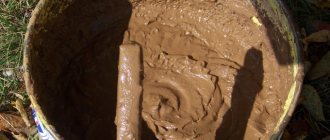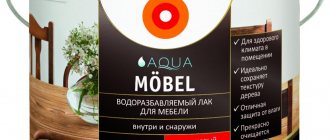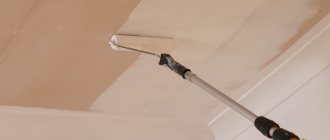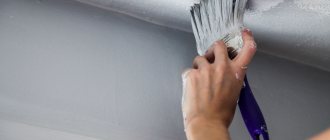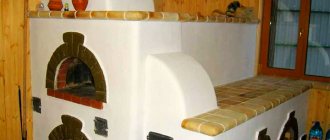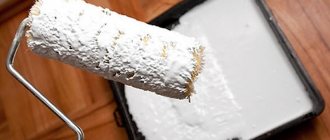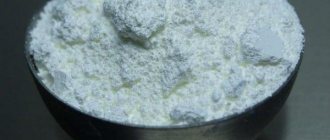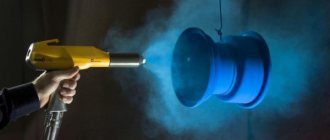Instructions for whitewashing the stove
Before whitewashing the stove, you should decide on the material used.
After all, the preparation of the solution and the application process itself depend on this. To whitewash with lime, you need to follow a few simple steps:
- Carefully remove the old layer of whitewash, especially where there is heavy dirt. To do this, use a wire brush or dishwasher. If whitewashing is carried out for the first time, then first seal all the chips, cracks and seams between the bricks.
- Wet the stove with water. It is better to do this in parts, as the whitewash is applied. If possible, wash off the remaining soot.
- Fill existing cracks and restore chipped plaster.
- Dilute the product with water until smooth and apply it to the oven surface using a brush or sponge. If necessary, apply a second coat. To avoid harmful effects of the material on your hands, you should use rubber gloves.
- Leave the material to dry.
Important! Putty for whitewashing the stove is used in the same way. Only to prepare the solution is to take part of the material and 2 parts of water.
When whitewashing with chalk, powdered material is used for the oven. It is purchased at hardware or construction stores. To prepare the mixture, 800 g of chalk are diluted in a liter of water and applied to the surface. The resulting solution takes on a gray tint, but do not be alarmed. Once the chalk dries, the stove will turn a beautiful white color.
To prepare a mixture of tooth powder you will need: 4 packs of product and egg yolks, as well as 200 ml of milk. Mix all the ingredients and after 10-15 minutes you can spread it on the heated stove. The consistency of the mixture resembles oil paint.
Regardless of what you use to whiten the stove in your home, when carrying out the procedure you must follow several rules to avoid stains on the surface:
- Pre-moisten the oven using a soft cloth or sponge;
- the solution is applied to a cold surface, and when using tooth powder - to a warm one;
- when whitewashing, use a wide paint brush or roller;
- the first layer is applied horizontally, and the second – vertically;
- preferably no direct sunlight;
- To avoid staining the door, cover it with paper.
When choosing how to whitewash a stove at your dacha, you can use proven methods or purchase a ready-made putty composition. The main thing is to choose the right tool for whitewashing and evenly distribute the product over the stove surface.
Formulation options
There are many ways to whitewash a stove without damaging your pocket. They are all very simple to prepare. Let's start with the most budget formulations that have been tested by time.
Mortar
This composition is inexpensive and can be found in hardware and construction stores. Plays the role of an antiseptic and a high-quality snow-white coating. To prepare it and use it for a long time, you need to dilute 1 kg of lime with 2 liters of water, in which 40 g of salt have previously been dissolved. The solution should be thoroughly mixed and then applied to the surface of the oven without delay.
Lime mixture for whitewashing with good durability qualities Source mrrestavrator.ru
Answers from experts
Natalya Klemyatich:
White caller ..they sell it in jars.. a glass of milk for 3 liters of water + 200 mg of primer and off you go.. Let it dry for 2 hours and coat again... Don’t skimp on the caller.. Good luck!!!!
n.:
There is a ready-made whitewash for trees in gardening stores, I think it will be ideal.
••Tatyana••:
They say they whiten it with regular tooth powder and the effect is good. (in the sense of whitening an already painted stove)
IMHO:
You cannot replace lime with anything; chalk gives a short-term effect.
EVA:
My mother whitened with white clay. I added a little blue and brewed starch so that it would not be smeared later.
Tatyana Ushakova:
My stove is generally covered with white vinyl wallpaper for painting. But they have been like this for 2 years now. and never painted it. I whiten only a small part directly near the firebox with water-based paints for ceilings (or wipe it off)
Agnia Malina:
There is such a creamy composition, I don’t remember the exact name, it’s either putty or putty. White and snow-white. Sold in bags of 5.10 kg, also in plastic buckets. In any hardware store. So my mother has been using it for a long time to whitewash the stove and ceiling. Dilute by eye with plain water. It fits perfectly on the surface, does not scratch the skin, and is easily washed off. If you need a different color, you can add caller to the finished solution; there are also a lot of different colors. Try it! )
Valery Shalakhov:
water based paint
Soggy,(this means❝wet❞):
Any heat-resistant paint. They are releasing a bunch of them now. There is a paint that covers engine blocks and the engine compartment (sold at auto parts stores). So it will stick 100% on the stove.
Alexander Amaretto:
Oh, God bless my memory, I haven’t seen a Russian stove for so many years! My grandfather (born 1895) did this: he took one part sand, three parts clay and one part lime (sour cream) and a glass of coarse (non-iodized) salt. I mixed all this thoroughly and left it for a day. I coated it with top and did not heat it for 2 days, but only coated it with this mixture using a large brush. Then he heated it over low heat (and this is the most important thing) for one day. That's it, for 1-3 years, it stood like new! Good luck!
Klava Golubkova:
Evgeniy, go to Yandex and ask your question.. get a real answer..
Andrey Yartsev:
well, in general, clay and sand are taken at the rate of 1/2...salt is also added 100 grams per 10 kg of sand clay mass; slaked lime is also added. In general, it is advisable to coat the oven while it is hot!!!! (well, this is if you have deep cracks and it really smokes in places))) Important! Before filling the cracks, clean them and moisten them with water!!! I restored the stove at my grandmother’s in the village using this method, but in general, buy a ready-made stove mixture (clay sand, quartz molding sand) - it costs about 200 rubles for a 25 kg bag. Fill it with water and go! Good luck)
What special paints are there for brick walls and how to apply them
If you decide to buy paint to paint a stove, it is best to choose paints that are resistant to high temperatures. Such paints will not burst or crack after a short period of time, but, on the contrary, will retain their original appearance for a long time.
You can also paint the stove with oil or enamel paints, which will allow the stove to enhance its thermal conductivity.
When choosing how to paint a brick stove, it is best not to paint it with paints containing aluminum or the like. Since if the stove is built incorrectly and the wall of the hearth of the stove itself does not comply with building codes, then its outer side can heat up from eighty degrees Celsius, and such heating can release from the paint itself such incredibly harmful substances as toxic fumes, which can poison from the inside human body and so on.
Well, paints that were made on the basis of drying oil may darken over time or completely lose their original color.
Today, in construction stores you can find special paints with increased heat resistance. These paints are ideal for frequently used stoves. But, unfortunately, their range of colors will not please a sophisticated painter, and if you could not find the shade you need, you can always paint the stove with a special primer or paint it with paint containing construction latex.
How can you whiten a stove?
Knowing how to whiten a stove, you can avoid further troubles, such as premature shedding of the material or its unsuitability for such work.
Lime
Lime is formed by annealing mountain limestone in mines. By adding water to the resulting solution, a white color is obtained, which is used for construction purposes. This whitewashing method is especially often used in the bathhouse.
The advantages of this method are as follows:
- inexpensive cost of materials;
- the solution has antimicrobial and moisture-resistant properties;
- can be applied to the old layer.
Important! Lime is an alkali, so precautions should be taken when using it
Shpakril
Putty is a paste for interior work. The only disadvantages include the high cost of the material. At the same time, it has a lot of advantages:
- moisture-resistant material;
- Sold ready-made, all you have to do is add water;
- characterized by increased whiteness;
- the surface will not get dirty;
- small cracks are covered.
Chalk is a natural material that is easily applied to the surface and easily washed off. The product produces a nice bright white color. The only disadvantage of chalk is its ability to leave marks, that is, every time you touch the stove, a white spot remains on your clothes.
Dental solution
Tooth powder is not a cheap option than whitening the stove in the house. At the same time, this method has a large number of adherents, since it has the following advantages:
- does not get dirty and does not leave marks on clothes;
- maintains an attractive appearance for a long time;
- the surface of the stove does not crack for a long time;
- You can drown on the first day after the procedure.
other methods
As an alternative, instead of the classic white color, you can use artistic painting. If you have the ability, then you should draw the selected picture yourself, otherwise stencils will come to the rescue. You can make them yourself or purchase them in a store. The template is pasted onto the surface and an outline is drawn, which is then painted with the necessary colors.
The base is the same whitewash with the addition of paints, for example, gouache, acrylic or water-dispersion. They tend not to crack at high temperatures and do not emit harmful substances. The image itself is applied with painting brushes. For large patterns, use cans of paint or a spray gun. After applying the design, it is not recommended to heat the stove for 2 days.
Why whitewash a stove: aesthetics or functionality?
For a long time, when stoves first appeared and continued to be used, it was customary to whitewash them. Why was this needed:
- the room acquired an attractive, cozy appearance;
- the structure was complete and reliable (no cracks appeared on it);
- it was easy to notice the leakage of combustion products and correct it;
- Whitewash played a disinfecting role (preventing the development of fungus and mold).
Nothing has changed now. Russian stoves are lined in a similar way, whether in a country house or in a private village house.
Beautiful Russian stove with a modern version of whitewash and stone finishing Source mrrestavrator.ru
Standard whitewashing of a Russian stove in a house Source www.kamin-best.ru
Painting the stove surface
Before painting the stove, you should make sure whether it needs to be restored? Restoring the surface of the stove with your own hands will not take much effort and time, but will protect it from cracks, damage and the negative effects of time.
Recommendations for performing the work:
- The outer part of the warm oven is treated with a brush with a special environmentally friendly varnish that is resistant to prolonged high temperatures and mechanical damage. To do this, you can use a mixture - varnish, prepared by yourself. Make a mixture of flour obtained from tap bricks, milk and 10 egg whites. It should be thick and viscous, then the surface will be a uniform red color.
- To give the surface a dark red matte hue, you can apply drying oil.
- If you want to get a shiny effect, you can coat the stove with oil or synthetic varnish.
- Shades of latex coloring composition will help satisfy color preferences.
A mixture of turpentine and varnish PF-283 can also be used as paint for the stove. Taking equal proportions of these substances, a transparent, slightly matte substance is obtained. It can be given the desired color. To do this, the dried gouache, ground into powder, is first carefully sifted, then added to the mixture, achieving the desired result.
Painting other oven elements
In addition to the surface, the oven also has other elements: a door, a lid, etc. Since they are made of iron or cast iron, it is quite possible for rust, soot, or stains to appear on them after whitewashing. For painting them, heat-resistant and heat-resistant enamel in the form of aerosols is recommended. The prepared surface is not primed, but painted immediately. Your stove should be the most beautiful, remember this!
Decorative finishing of the stove
In order to give a newly built stove a pleasant appearance, there are many ways; describing each of them does not make much sense, so we will focus on the most popular and common ones. (See also: Simple DIY oven)
Tiling the stove. Perhaps the most universal method of decorative finishing of stoves, due to the widespread use of ceramic tiles, this method is gaining more and more popularity among people who do not strive for the historical correspondence of the stove and who love simplicity. But this finish has several disadvantages, one of which is that under the influence of temperature, the tile heats up unevenly, which causes minor deformations and the tile “looses” its fastening. After several heating cycles, such decor may begin to fall off and will have to be reinstalled.
Using tiles to decorate a stove increases its beauty and reliability of the coating several times. These specially made ceramic tiles require specific installation skills, and their price itself is quite significantly higher than regular tiles.
The simplest and most affordable way to give a structure a “marketable” appearance is to whitewash the stove with chalk, which allows you to obtain an attractive and inexpensive coating without resorting to significant costs. The disadvantage of this decor is the need for periodic updating.
Another way that won’t be too difficult for the owner of the stove is to paint it with regular floor paint. The method seems to be simple and reliable, but after 2-3 months the entire gloss of the coating begins to fade and peel, and it will have to be completely renewed at least once a year.
How to whiten
In stores you can find modern compositions for whitewashing stoves; they are made by different manufacturers, but they go under one name - putty. Before use, such a purchased composition must be diluted with water in a ratio of 1 to 2.
After treating the stove with it, its walls will have a well-groomed appearance for a long time and will not fade. Among the popular manufacturers, it is worth highlighting those whose products come at an affordable price and with a high quality composition.
| Brand | Volume, kg | Description | Price, in rubles |
| Master | 1 | For this product, you need to prepare the surface of the oven so that it is dry and dust-free. They can be used to repair small cracks and whitewash walls, ceilings and stoves. |
30
Nova 0.8 Can be used for plastered, wooden and concrete surfaces. 21
BRAVO 16 A water-dispersive composition of the product is used for painting rooms and preparing walls for wallpaper. 960
Diola-006 4 In its pure form is used for sealing cracks, places after removing nails and screws, and restoring chips. After dilution with water, it is used as paint.
115
Flamingo 5 Its moisture-resistant composition can be used for any premises; it is characterized by high plasticity. 110
The best way to whitewash the stove in the house is up to everyone to decide for themselves; you can choose the appropriate one from the given means.
Professional products
In addition to the usual folk methods of whitewashing a stove, you can use industrial compounds. But first you need to decide on the types of materials and their main purpose. Let's consider several brands.
- "Master". This product is excellent as a whitewash for the stove, but the surface to be treated must first be prepared. Remove dust, clean dirt, seal cracks.
- “BRAVO” is a water-dispersed composition suitable for various types of coatings, including brick and stone walls. Does not rub off or fade with regular friction and exposure to high temperatures.
- "Flamingo". A good universal moisture-resistant composition that is suitable for covering stove structures, rough walls and nearby walls. It has a high degree of plasticity.
Professional whitewash hardens quickly and allows the use of decor on top of it Source haskidom.com
Before whitewashing the stove, all cracks on it must be sealed with putty Source kraski-net.ru
Experts recommend using an expensive, high-quality product once, rather than repainting and updating the surface every year.
Options for whitewashing a Russian stove
To prepare the solution, you need 2 liters of milk and 1 kg of chalk. That is, the composition proportion is 2:1. Crush the chalk into dust, use a mortar. Sift through a fine sieve: there should be no stones or large fractions in the material. Pour in milk and immediately begin whitewashing.
Tip: at high wall temperatures, the composition may turn red. To avoid this, add 50 ml of blue to the prepared solution. This is about a quarter of a glass.
Protein and milk composition. To whiten the stove in this way, you will need 100 ml of milk, two chicken egg whites and 2 boxes of tooth powder. Mix the ingredients, you should get a mass similar in consistency to sour cream. Do not make large volumes of the product: the protein coagulates quickly.
Lime-salt composition. Everything is simple here: you will need 1 kg of lime and 40 g of salt (two heaped tablespoons). Prepare the solution as for regular whitewashing, dissolve the salt. After finishing work, light the oven. When heated, the salt melts and covers the surface with a transparent and even layer.
The modern method is putty. If there is a hardware store nearby, buy a jar of putty. Dilute with water in a ratio of 1:2 and start whitewashing. Experienced craftsmen claim that this treatment of the wall surface is durable, does not stain clothes and does not fade.
A stove so indispensable in a private home for its practicality of use, independence from gas and electricity, still has its drawbacks. We will not list them all, but according to the thematic feature of our article, one of them is the release of exhaust gases through fittings, cracks, etc., which as a result leads to the deposition of soot on its walls. At the same time, the stove can get dirty; the stove also loses its attractive appearance and stands out from the interior of the house. The solution to this problem is to whitewash the stove.
In fact, whitewashing a stove is not such a complicated procedure; it is similar to whitewashing a ceiling. The difference is that it is usually even more convenient to whitewash the stove, but with the peculiarity of applying a thicker layer of whitewash to certain parts of the stove.
The first step is to remove part of the surface layer where most of the soot has settled. If we don’t remove the soot and start whitening, it will begin to show through, and we won’t be able to whitewash this area to its original whiteness. It is best to remove the top layer with a steel wool for washing dishes or a metal brush, but this must be done more carefully with a brush, since it is harsher and its use can lead to deep scratches on the stove.
Next, you need to wet the oven with water. Applying whitewash to a dry oven surface will be difficult, as the whitewash will roll into balls and be poorly absorbed. The oven can be soaked with water in parts, in accordance with the speed of whitewashing and the areas intended for whitewashing. At the same time, try to wash off any remaining soot if possible.
Now you need to inspect the stove and if there are cracks, or the plaster has crumbled somewhere, then it needs to be restored. You can use a brush to apply the putty. Its advantage in use is that it follows complex surface contours, filling in depressions and chips with hair putty. Or use a more traditional putty spatula. For whitewashing and puttying, you can use putty. More detailed information about putty can be found in the article “Shpakryl”.
We dilute the whitewash solution.
Do it yourself whitewashing with lime
Lime whitening is rarely used these days. But sometimes situations arise when you have to do this.
For example, renovation of an apartment with elderly parents who do not recognize other options other than lime whitewash. Or renovating the classroom where your children study.
Where is lime whitening used?
Whitewashing with lime is cheap, and lime has antiseptic properties. Due to the fact that lime is a good antiseptic, lime whitewash is recommended for kindergartens, schools, and medical institutions.
You can whitewash a garage or basement with lime - it’s not expensive, and the white walls and ceiling will make it lighter. Whitewashing of walls with lime is allowed. Once dry, lime whitewash creates a strong film, and the whitewash will not remain on your clothes if you lean against a wall.
Lime whitewash is used for finishing wet areas due to its moisture resistance.
Whitewashing with slaked lime disinfects the surface. For this reason, it is used for whitewashing cellars, chicken coops, cowsheds and other livestock premises.
In gardens, tree bark is treated with lime whitewash.
How to whitewash walls and ceilings correctly
Finding a master who will take on this work is now difficult. The work is not the cleanest. The master will not work for low pay. The payment he quotes will seem too high to you. This means you will have to whitewash it yourself.
Do-it-yourself whitewashing with lime is not so much a difficult task as it is unpleasant, and most importantly, dirty. Before starting work, cover the floors and furniture with film if it is not possible to completely empty the room. Prepare protective clothing.
Lime consumption during whitewashing
The consumption of whitewash depends on the method of its application and on the surface being treated. When applying whitewash with a brush, the consumption increases. Brick walls will require more whitewashing than smooth walls.
Approximate consumption is 0.5 liters of finished whitewash per 1 m².
Lime is available in slaked and quicklime varieties. Slaked lime is sold in the form of powder - fluff lime, and in the form of lime dough.
Fluff lime is diluted in a ratio of 3 liters of water per 1 kg of powder. From one package of fluff weighing 2 kg you will get 6 liters of whitewash. This whitewash is enough for 12 m² of surface, provided that it is not brickwork.
Ready lime dough is diluted at the rate of 1 kg of dough per 3 liters of water. Remembering that one liter of whitewash can whitewash two squares of walls, it is easy to calculate how much lime paste is needed.
Quicklime, lump, must first be quenched, then diluted with water.
To slak the lime, add water in a 1:1 ratio. As a result of quenching, you will get a powder. If you add three times more water, you will get a lime dough. The powder or dough for preparing lime for whitewashing is diluted with water. From 1 kg of quicklime you get 10 liters of whitewash, ready for use.
It is difficult to calculate whitewash consumption with an accuracy of square. Lime is an inexpensive material, so nothing bad will happen if you buy a couple of extra packages.
How to dilute lime for whitewashing
Lime is diluted with water according to the proportions indicated above.
Quicklime is first slaked with precautions. When lime is slaked, a large amount of heat is released and steam is formed. Slaking lime may splash out of the container. Rubber gloves, safety glasses and thick clothing will help you avoid burns if lime gets on your skin.
After slaking, the lime is not immediately used for whitewashing; the solution must sit for at least two weeks. And only after you have waited a certain period of time, the solution can be diluted with water and whitewashing can begin.
Methods for preparing solutions for whitewashing
The first and oldest method is milky-chalk whitewash. Even from the name it is clear that milk and chalk are used to prepare the mixture. The chalk must be finely crushed in a mortar and sifted through a sieve. Sifting prevents foreign particles from getting into the solution, so this step should not be ignored. Pour skim cow's milk into the resulting powder. To avoid yellowness from chalk, add blue or any blue dye, such as ink, to the solution. We use very little dye, otherwise the whitewash will have a blue tint. The thickness of the solution should be quite liquid. Recommended ratios: take 1.5-2 liters of milk per 1 kg of chalk. After mixing, you can immediately begin whitewashing.
The second method, no less well known, is whitewashing using tooth powder. You will need 2 boxes of tooth powder, 2 chicken eggs and half a glass of milk. Separate the whites from the yolks, mix them with milk and gradually add tooth powder. Stir everything carefully, let it sit for 10 minutes and start whitewashing. The mixture acquires the consistency of sour cream, so it is convenient to use a brush for whitewashing. After painting like this, a Russian stove turns out even and smooth. The surface dries quickly and clothes do not get dirty from it.
Slaked lime for whitewashing
The fourth method is whitewashing using putty. Shpakril is a paste-like mass, which is intended for interior work. In order to prepare whitewash in a bucket, you need to mix water and putty in a 2:1 ratio. Then stir well so that there are no lumps, and you can get to work.
Putty for whitewashing
Whitewashing the stove with lime mortar
The first place to begin the procedure for treating a stove with lime mortar is preparing the surface of the stove itself. We will not consider the procedure for puttying and priming a new stove; there are separate topics for this, but let’s move straight to preparation for whitewashing.
The furnace is inspected in an attempt to find areas covered with soot. If there are any, then you must first completely clean or wash them, otherwise after whitewashing blackness will appear in these places. Washing is used if the soot has not yet had time to eat into the clay well. If the furnace has been in operation for several years, then the best way to clean it from soot is to use a metal brush. Just be careful not to cause excessive damage to the plaster.
It is necessary to carefully inspect the stove for cracks and chips on the surface that appeared during operation. If such elements are found, then it is necessary to prepare a clay solution and cover them up, and small cracks, the so-called cobwebs, can be eliminated simply by wetting the clay that makes up the stove putty.
After preparing the surface of the stove, you need to prepare a lime mortar that will be used to whitewash the Russian stove with your own hands. To do this, take quicklime and pour it into a metal container; an old enameled basin or galvanized bucket is quite suitable for this. Before starting the extinguishing procedure, it is necessary to go out into fresh air or be in a well-ventilated area. If a universal plastic mass is needed for whitewashing, then dilute the existing lime with salt water in a ratio of approximately 1 to 4 and mix thoroughly. If you just need to lightly whitewash the stove over the existing whitewash, then you can dilute the lime with salt water 1 to 1. After you have a homogeneous mass in the container, you need to leave it for an hour in order to completely eliminate the active reaction of the mixture during its further use. After the chemical reaction has stopped, the water is allowed to evaporate, and the lime, after removing the water, is preferably crushed into a fine fraction for ease of further use.
The resulting slaked mixture is diluted with water or milk; when diluting with water, it is advisable to add 1-2 egg whites so that the mixture sticks better to the brick. Dilution is carried out until the consistency of thick sour cream is obtained; this is the mixture that is better suited for bleaching the stove, but for a more even coating it is advisable to pass the mixture through a large sieve to avoid lumps.
When the solution is ready, you can begin the whitewashing procedure itself. To do this, purchase a medium-hard flute brush and carefully apply a thick whitewash solution from top to bottom. In order to check how it will fit on the stove, you need to first coat the area and let it dry completely; if everything is fine, then you can continue whitewashing.
After the procedure for applying the lime composition to the surface of the stove is completed, it is advisable to leave it to dry for 1-2 days. If the result of drying is not a perfectly white stove, then it is better to repeat the whitewashing procedure to create a stronger and thicker light layer on the surface of the stove.
HomeSite map
Home » Heating and ventilation in the country.
Preparing the oven for whitewashing
The first stage is surface preparation. First of all, the walls of the new oven are covered with a layer of plaster, then coated with clay. If it is old and the plaster is falling off in places, you need to re-plaster these places. You should choose a special plaster that is heat-resistant; you can buy it or make it yourself.
After two days, the stove is heated at least three times. This is necessary so that the clay layer becomes as strong as possible. But at first you should not heat the oven too much: its walls should become slightly warm.
Before whitewashing the stove, it must be covered with a layer of plaster.
If the old plaster holds up well, it only needs to be cleaned of dirt and soot. Soot stains can be easily removed with a wire brush or dish scrubber. To remove greasy marks from the surface, use a caustic solution (2%). Rust stains are removed with a solution of copper sulfate in a proportion of 100 g of powder and 1 liter of water.
How to whitewash a stove with your own hands
First, you need to conduct a visual inspection of the stove; if there are deep cracks and chips on it, then they must first be covered in the old fashioned way with clay or specially purchased putty. It will not be possible to beautifully whitewash the stove without preparatory work; you need to carefully eliminate all defects so that your efforts do not go in vain.
Tools for work
Before whitewashing the stove, you should clean its surface with a broom or brush; for old exhibits, you can use a metal brush, but the main thing is not to damage the plastered surface with it. Then you need to determine the method of applying whitewash, for this you can use:
- A brush is chosen by those who have painted any surface more than once and are confident that they will do everything smoothly and without streaks. Before painting, it is advisable to soak the brush in water so that no hairs remain on the surface of the stove during whitewashing.
- A sponge is an alternative method; it does not give a clearly even color; it is used only for small stoves, since it will take a lot of time to obtain the desired painting density.
- Roller - suitable for both beginners and professionals; it covers a larger area with one stroke than with a regular brush. Applying the selected composition with a roller is very simple; the main thing is to move along the surface in the direction of the window to create uniform stripes.
- Spray gun - it is used for large stoves. It is easier to handle with two people: one person will maintain the required pressure in the device, and the second will monitor the uniform application of the composition filled into it. Before using it, you need to check the spray gun, and then constantly hold the spray gun at a right angle to the oven wall, while maintaining an optimal distance of 30 cm from it.
The Russian stove is an integral attribute of almost every private home. The easiest way to decorate a stove is whitewashing. It has long been believed that whitewashing was done well if after it the clothes did not get dirty from the oven. Why the actual whitewash and white color? It used to be believed that white color provides protection from the evil eye and various misfortunes, and also preserves the family hearth. Once upon a time, peasants considered it a great sin to put any drawings on a Russian stove or to dirty it. Such work was carried out, as a rule, on certain days. It was necessary to carry out whitewashing on the waxing moon and in no case on Saturday and Monday.
DIY artistic painting
If the classic white stove seems boring, it makes sense to decorate it with artistic painting. One should not think that only natural artists can do such work. As a basis, you can take ready-made stencils intended for painting walls, or transfer the image you like onto thick paper.
If the stencil does not have a self-adhesive base, it is first secured to the surface of the oven with tape. The outline is carefully transferred with a simple pencil and the missing lines are completed. For beginners, it is better to choose simple ornaments and patterns with large elements that do not require artistic skills.
For coloring, you can use the same whitewash, giving it the desired shades using gouache. Heat-resistant acrylic or water-dispersion paints are also suitable - they are not afraid of high temperatures and do not emit harmful substances when heated.
The most convenient way to apply the design is with artistic brushes of various thicknesses. Some patterns allow you to use spray paint. For decorative stripes, you can use a roller. After painting, the stove cannot be heated for at least 1-2 days.
To get a professional result from whitewashing or painting, it is better to call on experienced craftsmen for help. In this case, you will not need to worry about the strength and durability of the finish.
